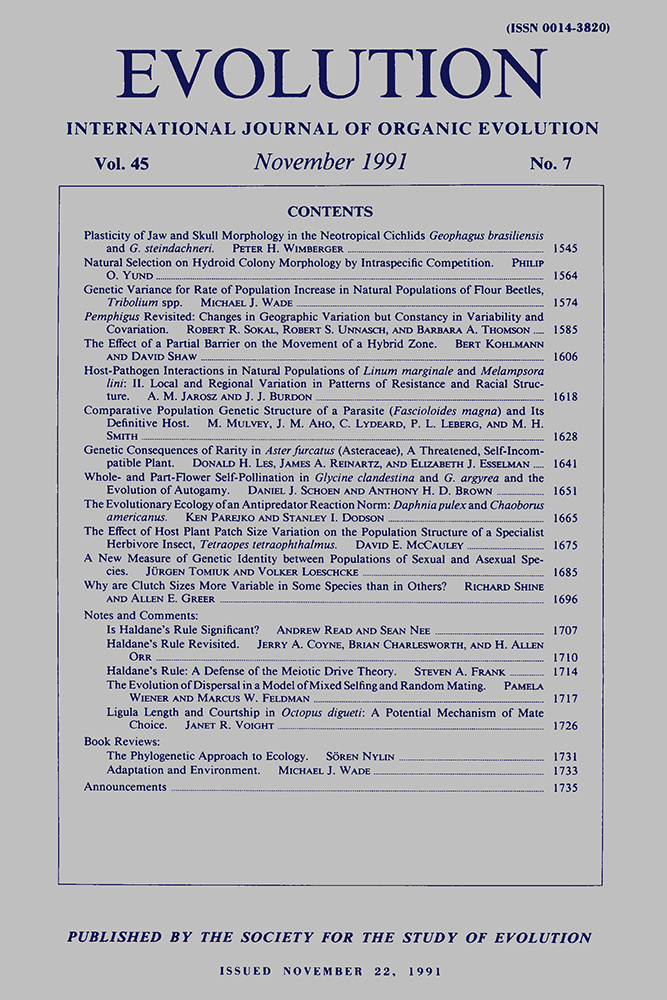A NEW MEASURE OF GENETIC IDENTITY BETWEEN POPULATIONS OF SEXUAL AND ASEXUAL SPECIES
Abstract
We define a new genetic identity measure that is especially well suited for asexual polyploid species as it circumvents errors in the estimation of gene frequencies. It also can be applied to sexuals allowing the study of phylogenetic relationships in species complexes consisting of sexuals and asexuals of different ploidy levels. The measure groups genotypes into classes dependent on homozygosity vs heterozygosity and the number of ancestral allele types vs the number of presumed new mutations. Its value is related to evolutionary time since divergence. The application of the method is illustrated by using electrophoretic data on the species group Solenobia triquetrella (Lepidoptera: Psychidae). A high similarity of estimated relationships among the proposed as well as other genetic identity measures is shown in the case of diploid sexual and asexual races of this species group. The phylogenetic relationships within the group are reanalyzed and monophyletic vs polyphyletic origin of parthenogenesis in this species complex is discussed. The genetic identity values found by the proposed procedure are explained by a polyphyletic origin of parthenogenesis, though a monophyletic origin of parthenogenesis in a broader sense cannot be excluded. The explanation of the phylogenetic relationships is based on the assumption of hybridization between related species and the extinction of one ancestral species. Furthermore, the genetic diversity is compared among sexual and parthenogenetic races of the species.




